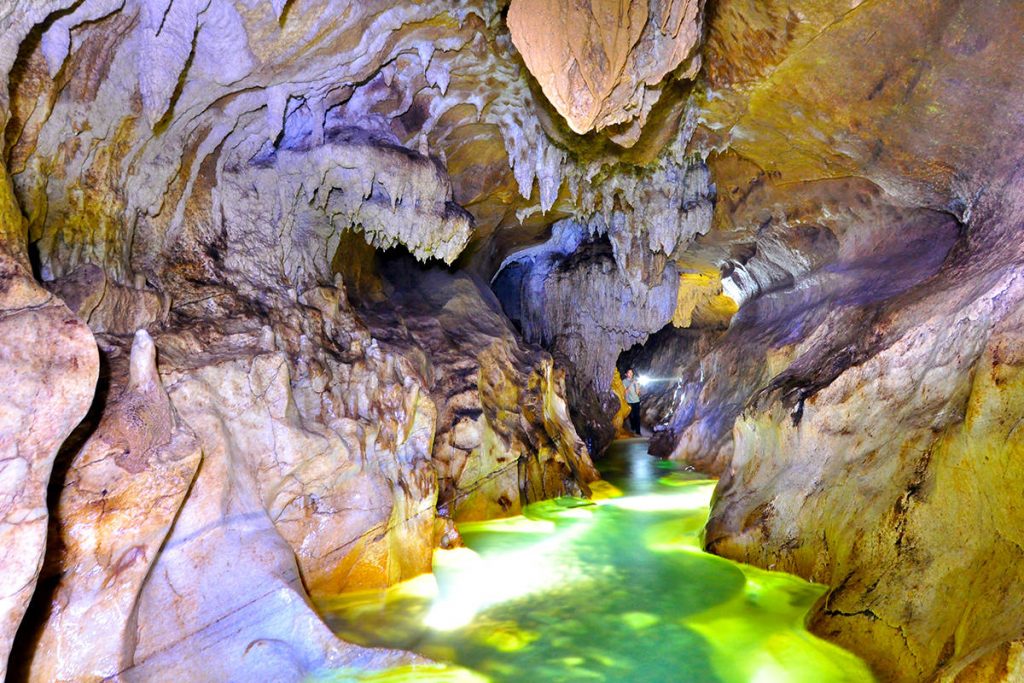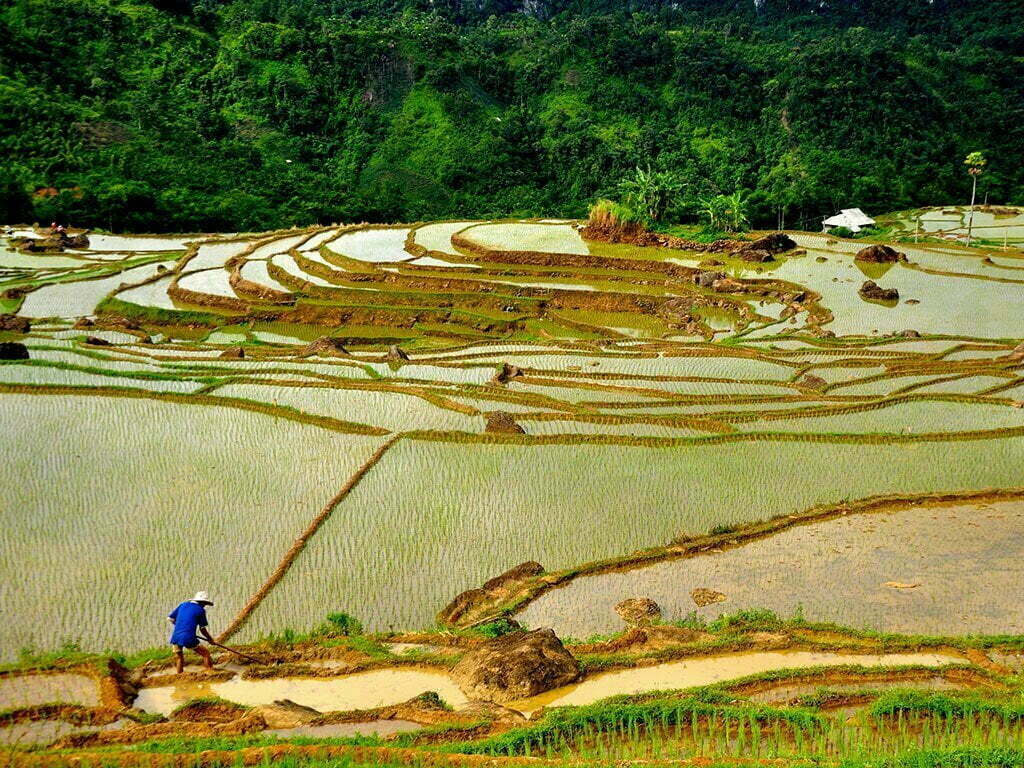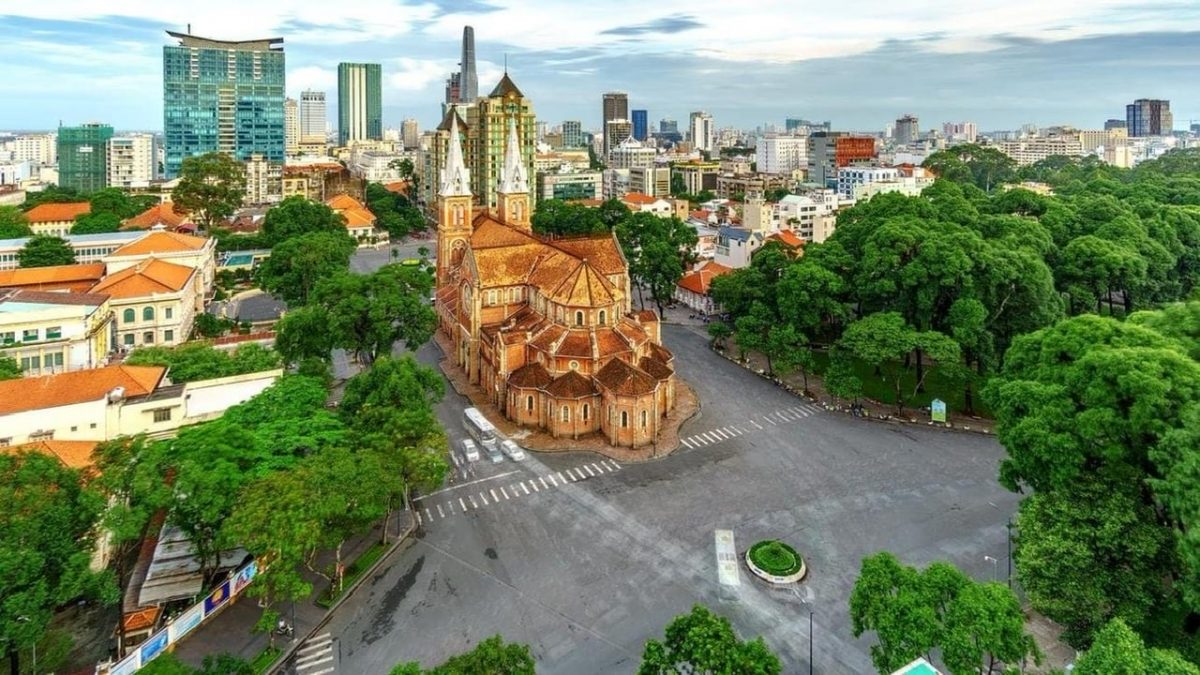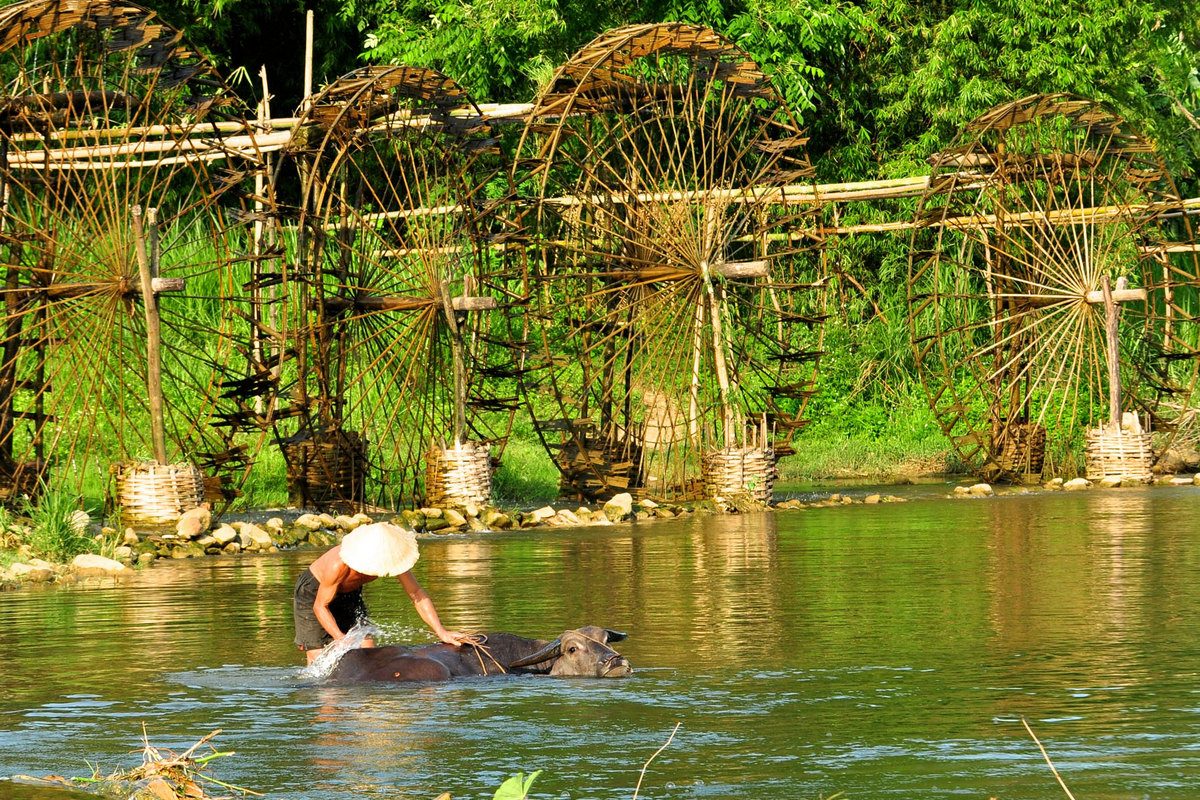Ba Be Lake – All you need to know
06/05/2024Ba Bể Lake (Vietnamese: Hồ Ba Bể; Ba means Three, Bể is from the Tày language word pé, meaning “lake”) is the largest natural lake in Vietnam. It is located 240 km northwest of the capital Hanoi city in Nam Mẫu commune, Ba Bể district, Bắc Kạn Province in the Northeast region of the country.
Having been formed approximately 200 million years ago, the lake is surrounded by limestone cliffs, which in turn are covered by primary forests. The lake comprises three zones named Pé Lầm, Pé Lù, and Pé Lèng. Three rivers, named Năng, Tả Han, and Nam Cường, are the main inflows of the lake. The Năng river enters the lake through a large waterfall called Đầu Đẳng. In the lake there are also three islands, named Án Mã, Khẩu Cúm, and Po Gia Mải (literally “Widow’s Island”).
Ba Bể Lake is a featured geographical science and is a biodiversity reservoir. It is a part of the Ba Bể National Park. The lake is at about 145 meter high to the sea level. Ba Be National Park was established as a national park in 1992. The park is a rainforest area with more than 550 named plant species. The hundreds of wildlife species here include 65 mammals, 353 butterflies, 106 species of fish, four kinds of turtle, and the highly endangered Vietnamese salamander. The 233 bird species include the spectacular crested serpent eagle and the oriental honey buzzard. Hunting is forbidden, but villagers are permitted to fish, and the government subsidises the villagers not to cut down the trees.
Ba Be Lake is home of 13 tribal villages, most belonging to the Tay minority plus smaller numbers of Dzao and Hmong. Nowadays, Ba Be Lake is getting more attention of domestic and international visitor for its variety of flora and fauna.

The legend of Ba Bể Lake
Once upon a time, there was a poor old woman. Villagers distrusted her because she seemed dirty and ugly-looking. Fortunately, she was eventually helped by a good-hearted mother and her son.
The truth was that the old lady was a fairy. She told the mother and son that the village and surrounding area were about to be struck by a natural disaster. Despite her warnings, no one believed her, except for the mother and son, who began to build a boat.
The next night, a terrible rainstorm began to engulf the village.
The mother and son, who had prepared their boat beforehand, survived and saved many people from drowning. The village was subsequently submerged in water and gradually formed into the current Ba Bể Lake.
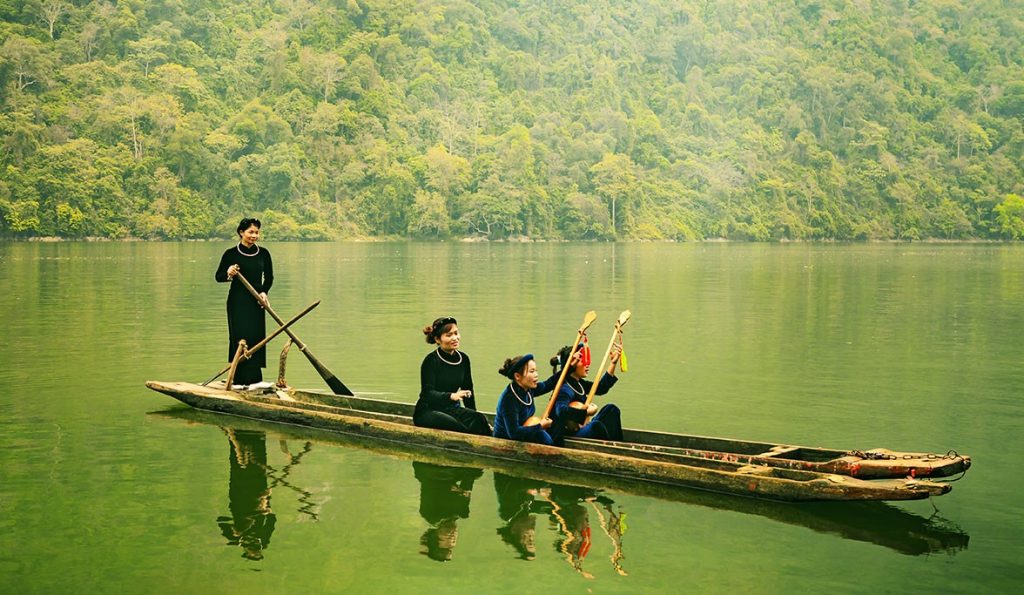
How to get Ba Be Lake from Hanoi?
There are two ways take you from Hanoi to Bac Kan:
– The first way, you can take National Road #3 towards Thai Nguyen, until the T-junction with Highway 268. Turn left towards Dinh Hoa (Chu Market), then continue on Route 254 to Bang Lung (Cho Don Market) and continue for 40 km to Ba Be National Park.
– The second way, once in Bac Kan City, travelers can embark on the journey to Ba Be Lake through two routes: either by taking provincial road 256, covering a distance of around 60 kilometers, or via provincial road 257 leading to Don Market, followed by a continuation to Ba Be, which extends the journey to around 70 kilometers.
– From Hanoi, It is easy to take a taxi directly to Mai Chau or you can rent a private car from Travel agency. The drivers cannot speak English but they can drop you any places there as your requirement.
– If you don’t want to experience local bus, you can go to My Dinh bus station in Hanoi. There are several bus companies operating routes to Bac Kan or Cao Bang City, passing through popular tourist destinations, including Ba Be Lake.

*** The best time to visit Ba Be?
Ba Be Lake attracts tourists all year round, with each season offering its unique charm. The rainy season from April to October, while the dry season from November to February with the possibility of frost.
The dry season is good time to visit the park. It is also attractive by the stunning scenery. The lush vegetation and pristine beauty of Ba Be National Park are particularly captivating during the dry season.
The rainy season (from May to September) leads to increased water flow in Ba Be Lake, waterfalls, and rivers within the park. This can enhance the majestic beauty of cascading waterfalls, and boat rides on the lake can be more exhilarating.
The most favorable time to explore Ba Be Lake is from February to April, when the climate is comfortably cool, with temperatures ranging from 25 to 30 degrees Celsius. During the first lunar month, there are numerous festivals demonstrating the cultures of the local ethnic groups.
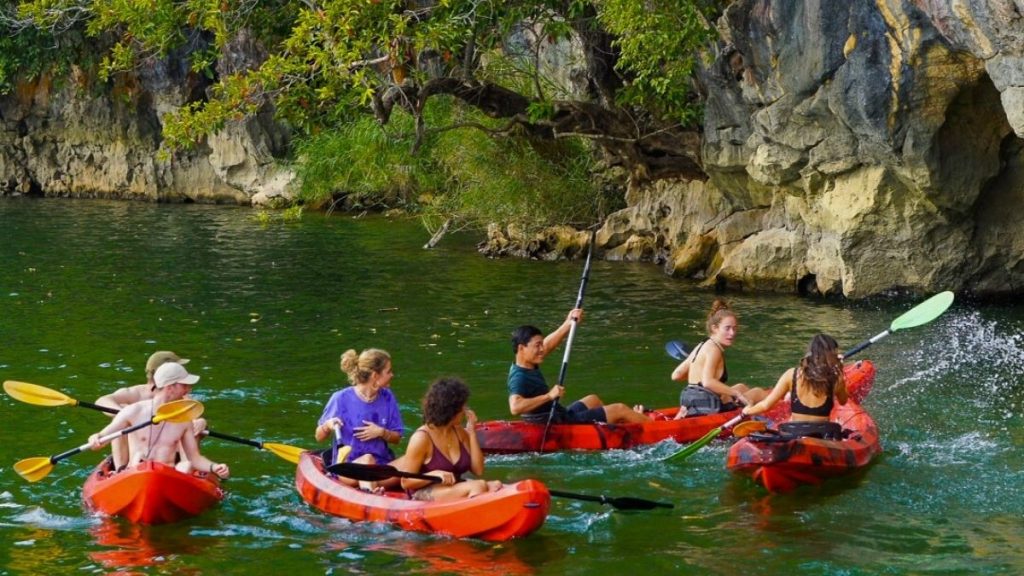
What to see & do in Ba Be National Park
Ba Be National Park is one of the ideal destinations for ecotourism in the North of Vietnam. Visiting the park, you can immerse in the pristine nature, explore the rich biodiversity and join exciting outdoor activities.
1. Ba Be National Park
If you love the ecotourism activities, Ba Be National Park is the ideal place to explore because it is featured by the diversified and specious fauna and flora system. The vegetation in the National Park mainly consists of limestone and evergreen forest. There are approximately about more than 417 species of plant. Climbing bamboo is a regional endemic plant, that is common on the hill slopes near the lake shore.
Furthermore, Ba Be National Park also attracts many tourists who are interested in discovery of animal life with plentiful animal system. There are more than 600 species with about 66 are specious; some were recorded in the Red Book of Vietnam.
2. Take a boat on Ba Be lake
Ba Be lake is about 8 kilometers long in total, 400 meters wide, and has the deepest point of about 35 meters. There are 3 freshwater lakes running together to make the Ba Be Lake, named are Pe Lu, Pe Lam and Pe Leng. Ba Be Lake is home to more than 30 animal species such as wild, pigs, bears, panthers, monkeys and birds as well as many ancient & giant trees, from which several varieties of precious wood are obtained in Vietnam.
Exploring Ba Be Lake by boat, you will have a chance to see lots of interesting sightseeing places including rivers, waterfalls, lakes, valleys and caves which are allocated amidst picturesque landscapes and nature.

3. Tien Lake or Fairy Lake (Vietnamese name: Ao Tien)
Fairy Pond (Ao Tien) is around 100 meters away from Ba Be Lake. The pond is located at the middle of limestone mountain and surrounded by green trees and full of water all around the year. Setting on the bank of the pond, you will feel pleasant with the cool and fresh climate when coming to Ao Tien. The primary for the name Tien Lake (the lake of fairy) is because of a legend that the fairies always went down in this place to swim and play chess.

4. Dau Dang Waterfall
Located about 3 km to the west from Ba Be Lake, there is a stunning waterfall named Dau Dang. It straddles the border between provinces of Tuyen Quang and Bac Kan. Here, Nang River flows through a rocky area containing numerous sized stones and form a long stretch of 1km between 2 lakes. Visiting Dau Dang waterfall, you can see water falling down with dazzling white bubbles throughout the year, creating an impressive music and scenery in the splendid jungle.

5. Pac Ngoi Village
Located on slopes of mountains in Ba Be Lake. The village is the home of Tay ethnic minority. The village has more than 40 traditional silt houses with nearly 400 people who are doing agriculture such as: growing rice and raising domestic animals.
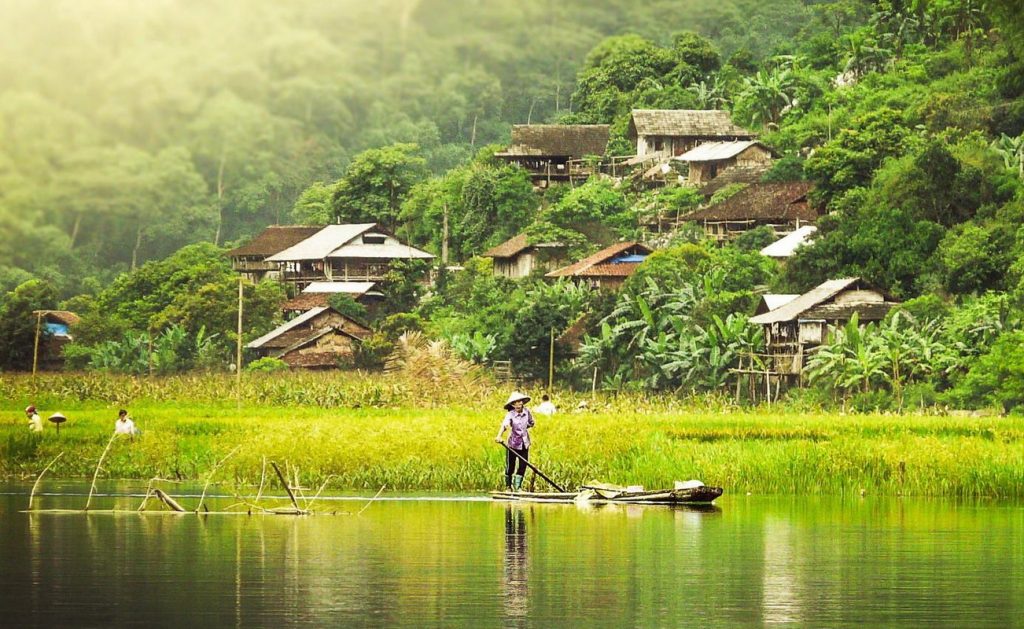
6. Puong Cave
Located in Ba Be National Park of Bac Kan. It’s about 5km from the center of Cho Ra town. The cave has a height of 30m, a length of 300m. Also formed when the Nang river flowed through the bottom of Lung Nham limestone mountain.
Explore Puong Bac Kan cave with mysterious beauty. Sit on a boat and cross the Nang River, surfing the waves, visiting the cave from one end to the other. Visitors will enjoy the fresh natural scenery, feel the peace and relaxation. From afar, you can see that the cave is very small. But when you reach closer, you will be overwhelmed by the mystery and majesty appearing before your eyes.
The landscape of Puong cave still retains its original pristine character with the stimulation of discovering the mystery. Stepping inside the cave, visitors will encounter many strips of stalactites with strange shapes and beautiful colors.
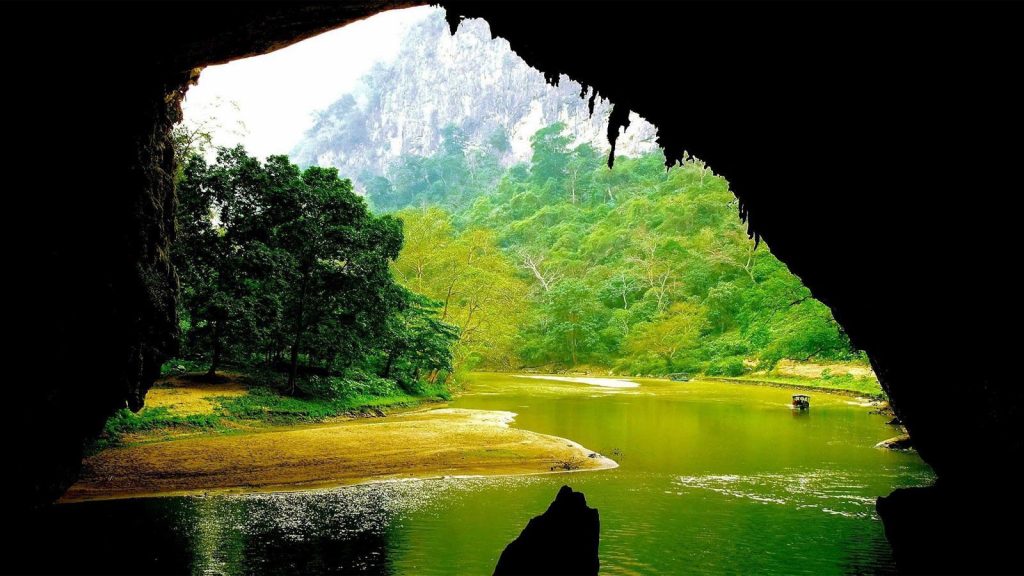
7. Hua Ma Cave (Vietnamese: Hang Hua Ma)
Hua Ma Cave is located in Quang Khe Commune, Ba Be district within the Ba Be National Park, it is next to the River Leng and is a part of Pac Ngoi Village. It is 6 kilometers from Ba Be Lake. Go to Hua Ma Cave, you have to go up for nearly 300 meters on the stairs. This cave is 50 m high and 500m long. There are beautiful stalactites and stalagmites in different sizes and shapes, such as terraced fields, lotus throne, stone gate, stone curtain and so on. Because the cave is just discovered recently, it is now considered as the most spectacular intact natural cave in this region.
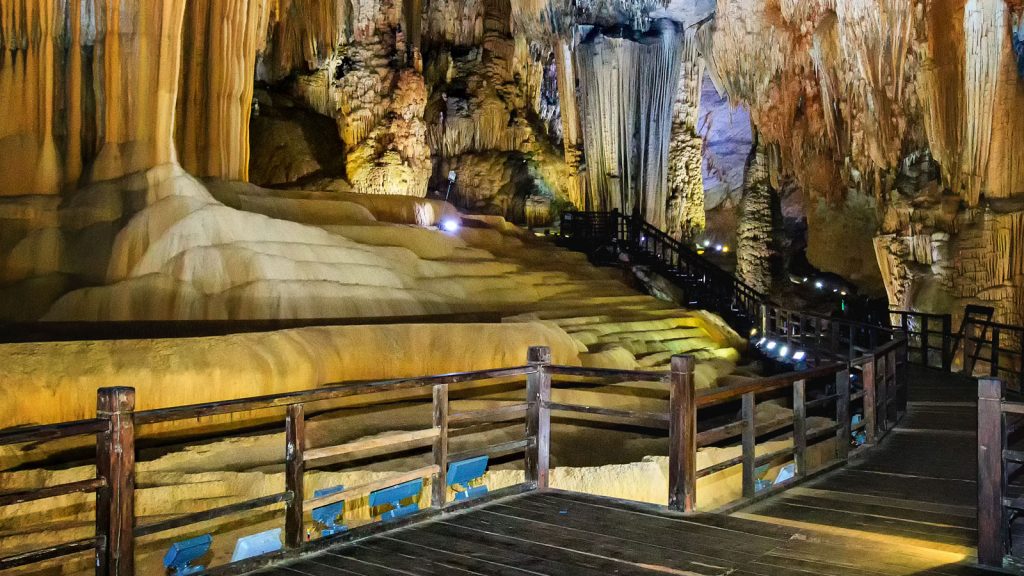
8. Visiting ethnic minority villages
Ba Be National Park is home to several ethnic minority communities, including the Tay, Hmong, and Dao people. Visiting the park, you can learn about the locals’ culture, visit their homes, enjoy local dishes and wines, listen to traditional music, and join their traditional festivals if you come here at the festival time, etc. Let’s take the opportunity to interact with local people and learn about their way of life!

9. Thac Bac Waterfall (Vietnamese: Thác Bạc)
Thac Bac Waterfall is located 8 km south from Ba Be Lake. In the area of about 200 m in width and 40 m in height, The waterfall creates such a beautiful scenery with the formation of so many small lakes. According to some documents from Ba Be National Park Managerment, underneath of Thac Bac waterfall, there are crystal clear puddles along with stacked rocks, which set a perfection for tourists to take photographs.
Thac Bac Waterfall
Hidden in the dark green of the forest, the name Thac Bac literally means Silver Waterfall in Vietnamese. Situated in the humble Vang village, about 8km south of Ba Be Lake, this awe-inspiring multi-layer natural waterfall is formed by numerous small lakes in the area, creating a marvelous picture of water with dazzling white bubbles rushing off the vertical cliffs as a white silk ribbon embracing the steep mountains.
10. Lo Mo cave expedition
Lo Mo cave expedition is a large area of clear water lakes, dramatic mountains and verdant forests in the North of the national park. The cave mainly stretches underground for around 3000m and its limestone karst is created by erosion of water flow over a long period of time.
Inside the cave, there living the bats as well as many other plants and insects, that interest every nature lovers. The cave’s entrance is concealed in the clift of the mountains so it is not easy to discover at first.
